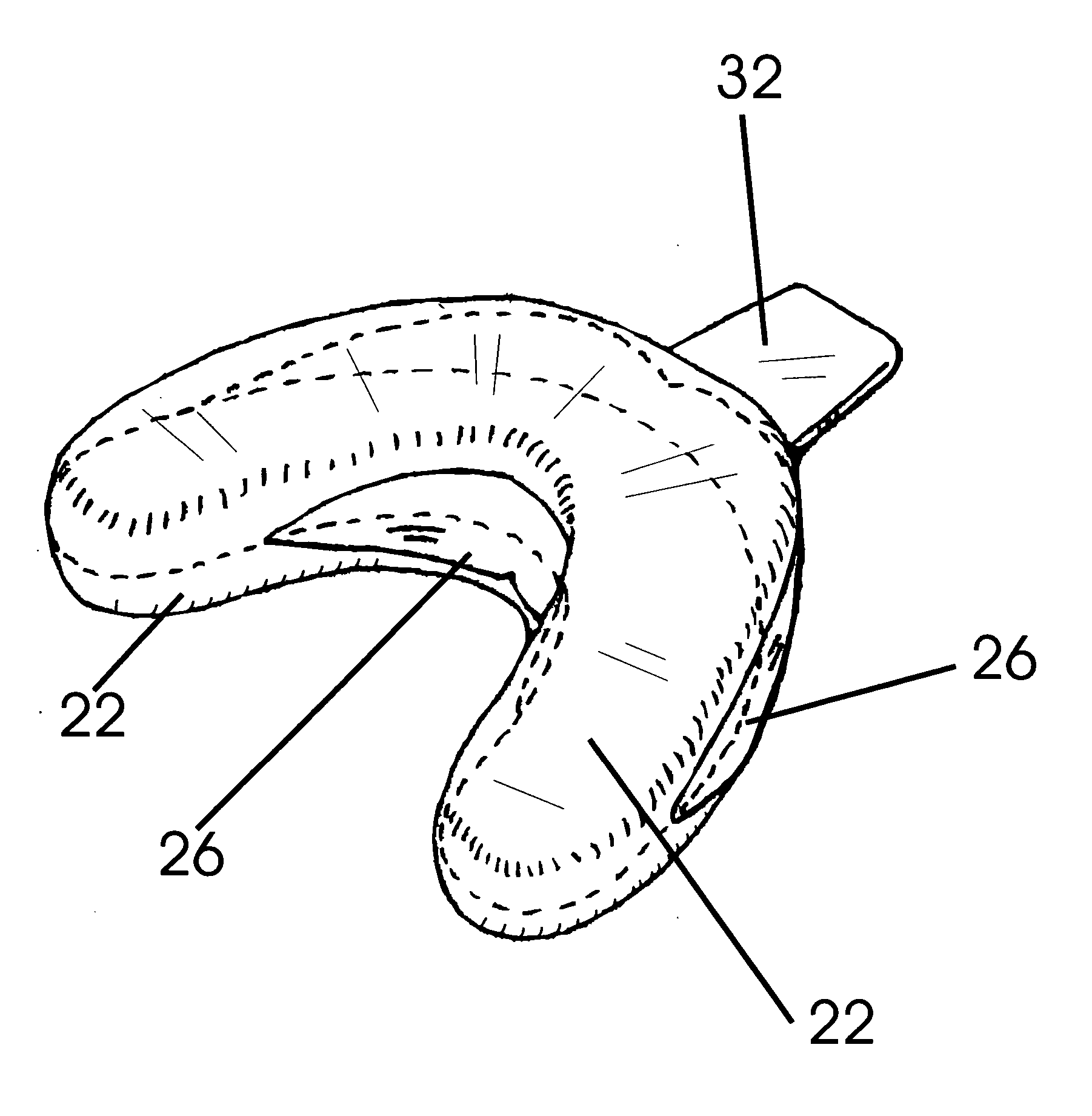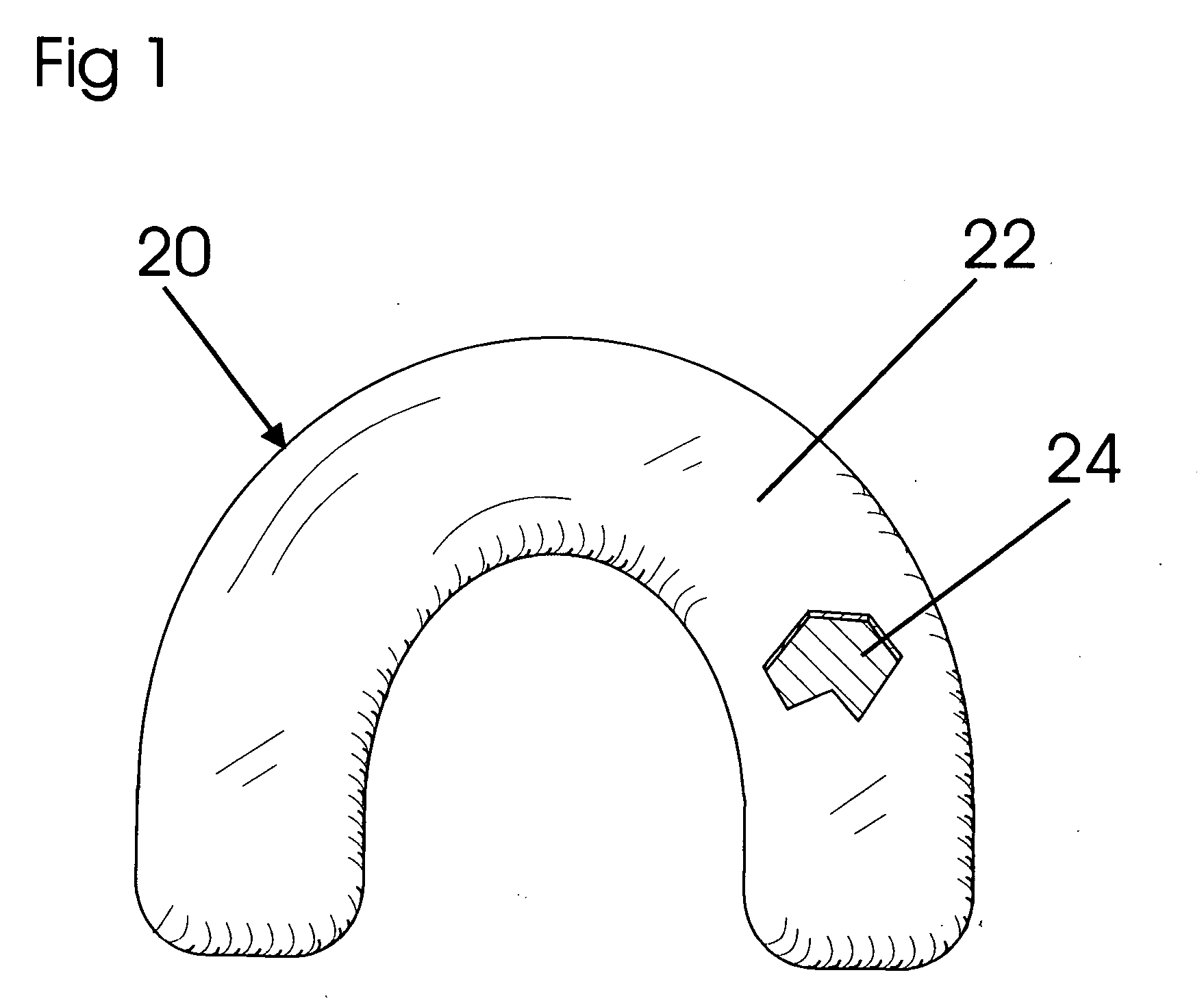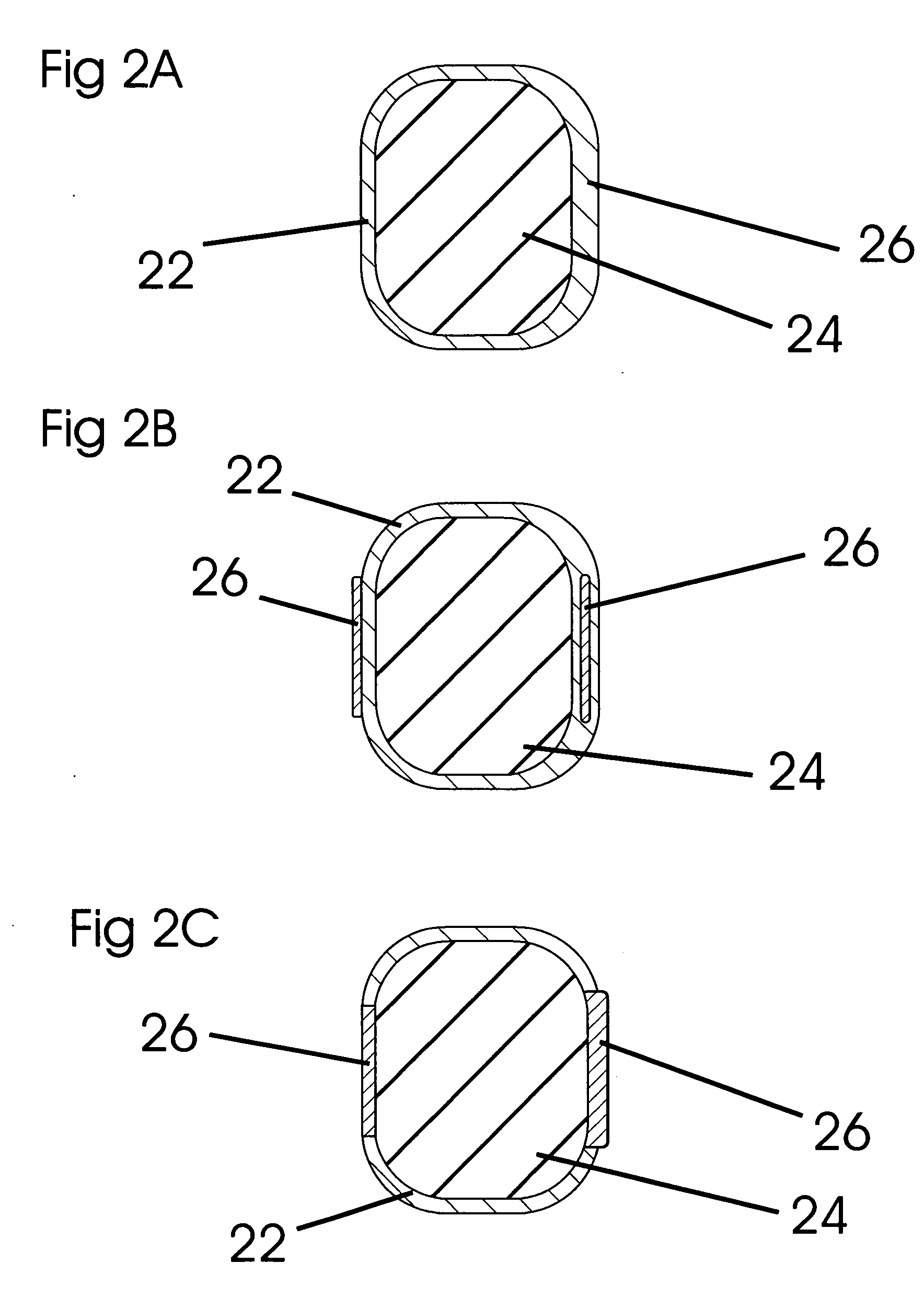Occlusal indicator tray & processes therefor
a technology of occlusal indicator tray and process, which is applied in the field of custom dental trays, can solve the problems of less accurate conformation of trays made with this process to the teeth, and less time for custom dental trays to be formed, so as to facilitate the formation of accurately adapted custom dental trays, less steps, and less time.
- Summary
- Abstract
- Description
- Claims
- Application Information
AI Technical Summary
Problems solved by technology
Method used
Image
Examples
example 1
[0113] A first example of a process utilizing basic mouthpiece 20, in this case to form a medicament tray 56, begins with user heating water to 80° C. From a kit provided, user removes a mouthpiece 20 as shown in FIG. 3, a hook for holding mouthpiece 20 underwater, small scissors, and a syringe filled with a medicament.
[0114] User places said hook into a small hole in handle 32, and holds said hook to pull basic mouthpiece 20 down into the heated water, as basic mouthpiece 20 tends to float. Basic mouthpiece 20 is held under the heated water until sheet 22 becomes moldable. Basic mouthpiece 20 is removed from the heated water, and is inserted into user's mouth. User forcefully bites the upper and lower arches of teeth into basic mouthpiece 20 until the upper and lower portions of sheet 22 contact separator 28. Filler 24 provides sufficient resistance pressure to mold sheet 22 to fit the shapes of the teeth. Separator 28 inhibits adhesion of the upper portion of sheet 22 to the lowe...
example 2
[0116] A second example of a process utilizing basic mouthpiece 20 as shown in FIG. 1, in this case to hold an attachment, begins with a dentist affixing an attachment, or template thereof, in a patient's mouth, such as by affixing a false tooth in a space left by a missing tooth in a patient's mouth. Said false tooth is affixed into said space in such a way that a small undercut remains under said false tooth, such that sheet 22 can later be molded into said undercut, and thereby retain said false tooth in basic mouthpiece 20, and later in tray 56. A user inserts basic mouthpiece 20 into a rigid dental stock tray. Said stock tray has a wedge-shaped occlusal pad on the surface which will face the opposing dental arch, thereby facilitating forceful occlusion of the teeth onto said stock tray. User heats water to 80° C. Basic mouthpiece 20 is held under the heated water by holding said stock tray handle until sheet 22 becomes moldable. Said stock tray containing basic mouthpiece 20 is...
example 3
[0118] An example of a process utilizing single-arch mouthpiece 38, in this case to form an economical occlusal indicator tray 56, begins with a dental office user selecting a single-arch mouthpiece 38 that is comprised of a sheet 22 containing capsules 46. Said single-arch mouthpiece 38 also has a source 42 comprising an elastic hand-squeezable bulb, as shown in FIG. 7. Said bulb is partly filled with water as a coolant.
[0119] User inserts single-arch mouthpiece 38 in a patient's mouth to check the fit. The curvatures of the patient's dental arches are found to be of slightly different than the curvature of single-arch mouthpiece 38 as provided from the manufacturer. User flexes single-arch mouthpiece 38 to a curvature that corresponds with the arches, and element 40 in single-arch mouthpiece 38 retains the new corresponding curvature.
[0120] Handle 32 is held while immersing single-arch mouthpiece 38 in the heated water until sheet 22 becomes moldable. Source 42 is not immersed i...
PUM
 Login to View More
Login to View More Abstract
Description
Claims
Application Information
 Login to View More
Login to View More - R&D
- Intellectual Property
- Life Sciences
- Materials
- Tech Scout
- Unparalleled Data Quality
- Higher Quality Content
- 60% Fewer Hallucinations
Browse by: Latest US Patents, China's latest patents, Technical Efficacy Thesaurus, Application Domain, Technology Topic, Popular Technical Reports.
© 2025 PatSnap. All rights reserved.Legal|Privacy policy|Modern Slavery Act Transparency Statement|Sitemap|About US| Contact US: help@patsnap.com



